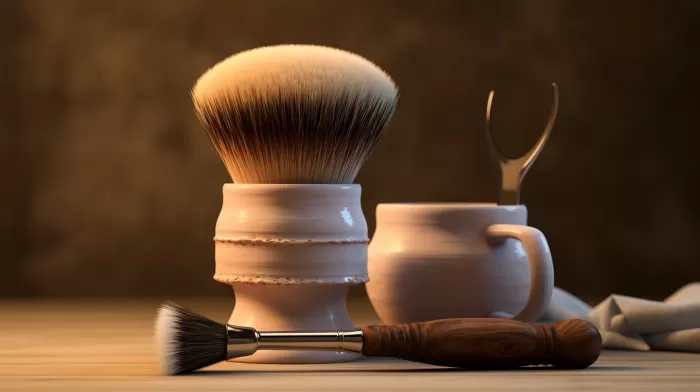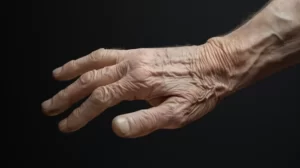“Old-fashioned” often means “high-quality,” and too often, we sacrifice quality for the sake of convenience. Unfortunately, that convenience also often presents a number of health risks. And there’s one aspect of our morning ritual — spreading that store-bought shaving cream on your skin before a nice shave — that, though convenient, may be exposing your skin to deadly toxins.
Our skin is a large and porous organ. Anything absorbed through our skin goes directly into our bloodstream. This includes our personal-care products, which, taken together, contain thousands of different chemicals with varying toxicity. The Environmental Working Group estimates that about 20 percent of chemicals used in cosmetics could cause cancer. Yet these cancer-causing toxins are given a free pass.
By exposing ourselves to these chemicals, we’re not just making ourselves susceptible to skin irritation and infection. We run the risk of wiping out vital defense mechanisms that keep our bodies functioning.
Today, shaving cream on drug-store shelves has a fistful of toxic ingredients, including phthalates, parfum (fragrance), and triethanolamine — which also appear in many soaps, shampoos, detergents, and toothpaste.
The Effects of Toxins in Shaving Cream
Here’s what these toxins do to your health:
Phthalates: Phthalates can disrupt the functioning of hormones, which can harm important balances throughout the entire body, including those impacting the immune system and brain. Traces of phthalate metabolites found in human urine are associated with obesity and insulin resistance in men because they inhibit testosterone function. About 80 percent of people are exposed to this type of toxin.
Parfum (fragrance): Parfum is a potpourri of toxicity, with many of the 3,000 chemicals used to make fragrance untested — neither in isolation nor in combination. Some that have been submitted to lab tests have been associated with neurotoxicity and cancer. So either perform the extensive research to determine what those cancer-causing chemicals are or just cut the stuff.
Triethanolamine: This is what you get when you take two known toxins, create a reaction between them, and put them in consumer products. Triethanolamine is a skin and respiratory toxicant. Animal studies have also shown Triethanolamine can cause bladder and liver cancer and cell mutation in testicles.
Other offenders include parabens, which increase the risk of breast cancer in women, and sodium lauryl sulfate, which is toxic to organs and can cause cell mutation that leads to cancer.
The good news is that some of these toxins do not bioaccumulate. Your body is capable of flushing poisons out of your system under proper conditions that include eating right, drinking enough water, and avoiding pharmaceuticals.
Steady exposure to toxins, however, can mean your body has trouble keeping up the fight. Despite your body’s natural efforts, you can become increasingly vulnerable as long as you continue applying poisons.
Shaving Cream Alternatives
When it comes time to shave, consider these four alternatives to chemical-laced creams:
- Natural shave gels: Dr. Bronner’s Shaving Gel is an honest choice. I don’t prefer gels, so I haven’t personally tried it. But my experience with other Dr. Bronner’s products has been great. (I use their Castile Bar Soap for pretty much everything.)
-
Classic shave cream: Classic-style shaving cream doesn’t require much elbow grease. You can work it into lather directly on your face using your fingers or a brush, just as you would with any aerosol-canned product. There are many choices, and any decent barbershop should carry some for you to try. Be sure to double-check the ingredients, though, because plenty of “old-fashioned” brands use fragrance. Pacific Shaving Company makes a classic shave cream you can feel good about using. Or try Hal’s Deluxe. It was highly recommended to me by a friend and seems like a safe bet.
-
Classic shave soap, brush, and mug: If you’re truly ready to enjoy the high-quality that comes with going old-fashioned, then a bar of shave soap is what you want. You may luck out and find something similar at a farmers or artisans market near you. If not, try Badger or Imperial Glycerin. The latter won’t even require a mug.
-
Homemade shaving cream for the do-it-yourselfers: Some of us are simply more ambitious than others. If that’s you, and you want total control over your shaving cream, then make it yourself. Add cedarwood oil for a nice manly, woodsy scent (and ladies may consider trying lavender oil). Cedarwood oil acts as an antiseptic, anti-inflammatory, and an antispasmodic, and it also helps with many other things that plague folks daily.
Ditch the toxic foam. Try the natural stuff. And remember: Embrace the process. Let the extra effort be a reminder to yourself that you’re choosing quality and resisting a failing system.



